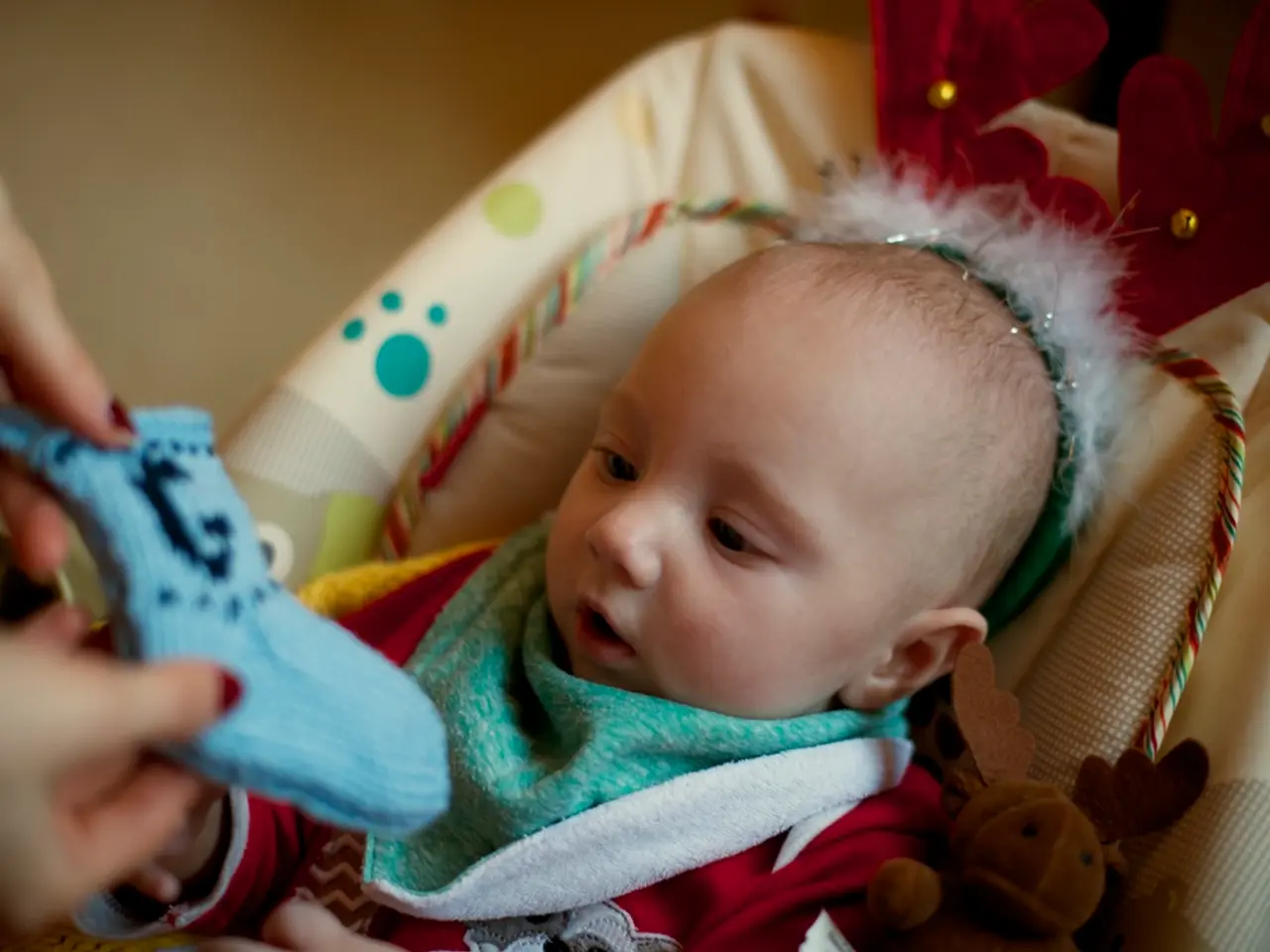Children's Inguinal Hernia: An Explanation
Inguinal hernias in children are relatively common, often stemming from congenital defects called unclosed processus vaginalis. This condition results in an incomplete closure of the inguinal canal, leading to a weakness in the muscles of the abdominal wall.
The inguinal canal is a passageway that allows the testicles to descend into the scrotum. When this canal does not close properly, it can leave a weakness in the abdominal wall, making children more susceptible to hernias. Other factors that contribute to the development of hernias include general muscle weakness in the abdominal area and premature birth, which can result in weaker abdominal muscles.
The primary symptom of inguinal hernias in children is a visible bulge under the skin in the groin area or scrotum. This bulge often becomes more apparent when the child cries, coughs, or strains. Children may also experience pain or discomfort, which can improve with rest, and infants might exhibit fussiness or trouble feeding due to discomfort caused by the hernia.
Surgical repair is the standard treatment for inguinal hernias in children. The procedure typically involves a small incision in the groin area, pushing the intestine back into place, and stitching the abdominal muscle to close the hernia. The surgery is usually performed under general anesthesia to ensure the child remains comfortable during the procedure. After surgery, it is essential to monitor the child for any complications and follow postoperative care instructions provided by the healthcare provider.
It is crucial to seek immediate medical attention when a strangulated hernia occurs in children, such as when a hernia bulge turns red, purple, or dark. In such cases, manual reduction by doctors can prevent bowel infarction. However, if manual reduction is unsuccessful, surgical reduction may be necessary.
Children with a history of hernia or prior hernia repair, prematurity, underweight, being a boy, newborn infants, having a family history of hernia, a child with developmental dysplasia of the hip (DDH), a child with cystic fibrosis, a boy with undescended testes, chronic cough, and a child who has been exposed to secondhand smoke are at a higher risk for inguinal hernia.
Inguinal hernia repair could be done electively for children without strangulated hernia or incarcerated hernia, but if present, it would be an emergency condition. There are two types of inguinal hernias: indirect inguinal hernias, which go through the inguinal canal and inguinal ring, and direct inguinal hernias, which protrude through the lower belly.
Laparoscopic surgery, or minimally invasive surgery (MIS), offers advantages such as a concealed scar, reduced operation time and infection, and the ability to detect other abnormalities. A child's healthcare provider should be consulted for options for hernia repair and the risks of surgery.
Inguinal hernia is a condition where fatty tissue or a part of an abdominal organ pokes through the groin, common in both adults and children. It is more common in males than females, with a ratio of around 10:1. Additional tests such as ultrasound, computed tomography (CT) scan, and magnetic resonance imaging (MRI) scan may be done for occult hernias or obese patients.
- In addition to inguinal hernias, other chronic diseases such as diabetes and chronic kidney disease can pose significant health challenges, requiring diligent management for overall health and wellness.
- Mental health is also a crucial aspect of health-and-wellness, and children with a history of hernia or prior hernia repair may face additional mental health challenges due to the surgical procedure and recovery period.
- In the realm of science and medical-conditions, research is ongoing to explore the potential benefits of CBD in managing pain and discomfort associated with chronic diseases and chronic-kidney-disease.
- While medications like CBD may offer relief for symptoms, it's essential to maintain open communication with healthcare providers and remain adherent to their recommended treatment plans for optimal health outcomes.




